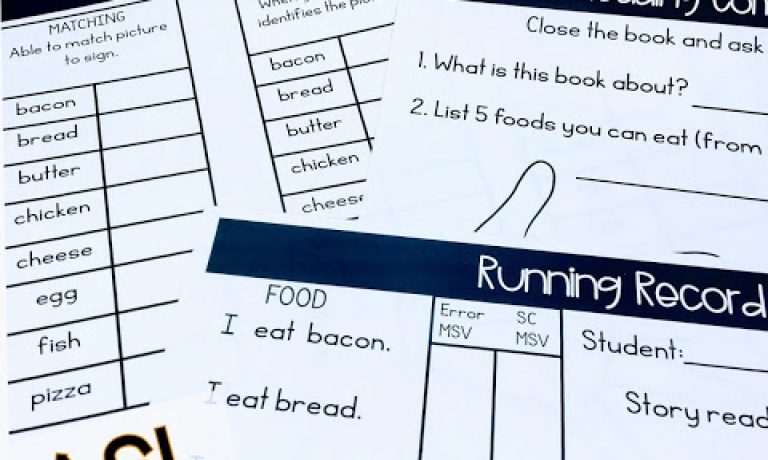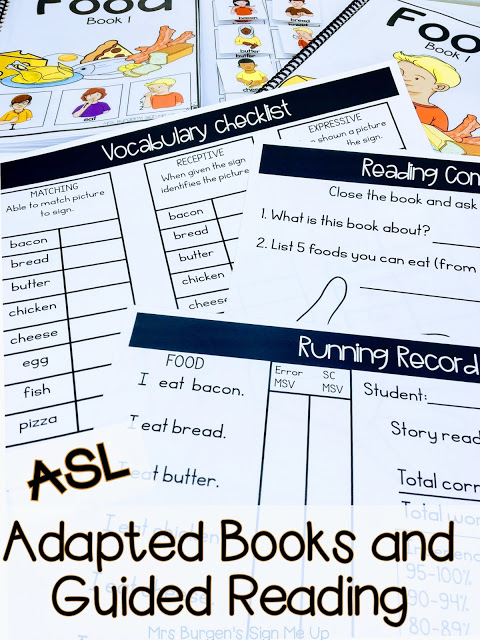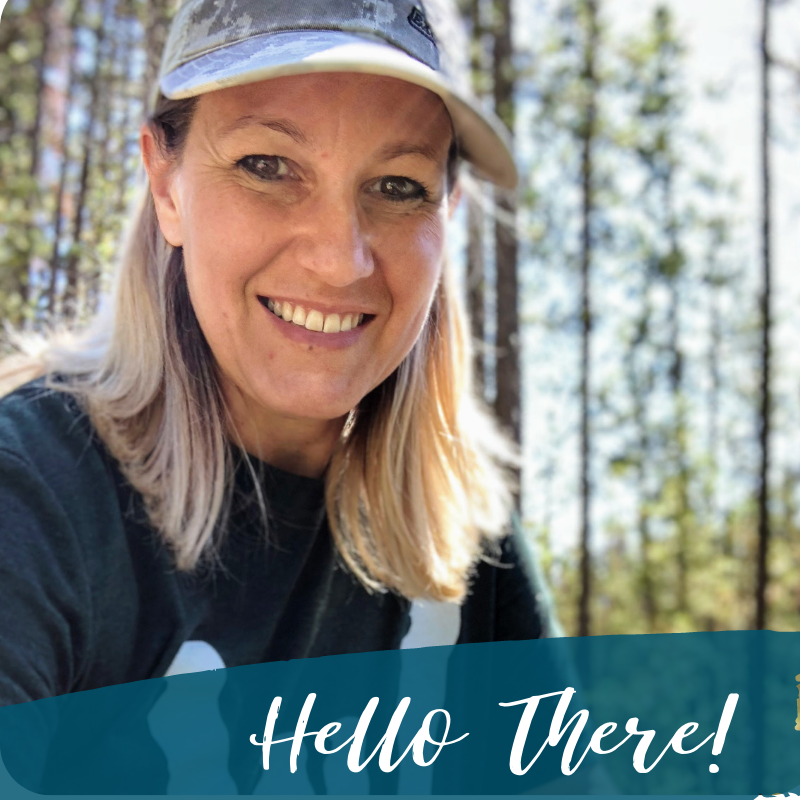How I use Adapted Books during Guided Reading with D/HH students.
Adapted Books for Guided Reading
PART THREE
I don’t really want to start every post with a comment about language deprivation, but it is so deeply ingrained in our every day teaching with deaf and hard of hearing students.
So task is always this,
STEP ONE: teach meaningful vocabulary
STEP TWO: everything else.
Insert literacy, both English and ASL literacy. Really, you cannot be literate in anything if you have no vocabulary. So the task is always to build native language vocabulary. For most of my students this language is ASL. Most enter my classroom with extremely limited vocabulary in any language. But immediately upon entering school they are expected to begin developing English literacy skills.
What we know
Students need multiple exposures to a word before they are able to understand it, use it, work with it. BE LITERATE.
For deaf students that means they need multiple exposure to both signed and written language.
So the beginning steps go like this.
Connect a sign with an object/action
Experience MANY situations to use the sign in the correct context
Match the sign to the object
Receptively understand the sign
When given the sign, student can demonstrate understanding (pointing to an object/picture etc.)
Expressively use the sign in context.
Student is able to use the sign to communicate about his/her environment
I created these Adaptive books to assist in this process. First of all the adaptive/interactive nature of these books makes them highly engaging and students can’t wait to get their hands on them.
I always begin introducing the vocabulary as a group as described in this previous blog post CLICK HERE to read that.
Once I have the students at my table for guided reading, we repeat the process in the whole group activity.
ASSESS READINESS
I might say something, like today we are going to read a book about food.
Tell me some foods you eat.
PICTURE WALK THE STORY
Go to each picture and discuss the picture, what is it? Have you eaten it? Did you like it? Would you eat it again? etc. etc.
READ THE STORY
Go through the book and allow the student to choose the correct sign for each picture ensure the student is signing the item correctly.
Do this for the single sign book.
When your student is ready he/she can move up to the sentence book.
Follow the same procedure teaching the the new signs included in the sentence.
I am going to skip a few steps here that you will find detailed in
THIS BLOG POST.
ESSENTIAL DATA COLLECTION
I created 3 assessments that I believe to be ESSENTIAL for DATA collection. Each form provided MEANINGFUL data for me as a teacher.
First is the
VOCABULARY CHECKLIST
I assess each item on this list.
MATCHING
Can the student MATCH the sign to picture.
RECEPTIVE
IF I SIGN the word, can the student demonstrate understanding of the sign by pointing to the picture, touching an object etc.
EXPRESSIVE
I show a picture or item to the student and he/she demonstrates the sign. Students could also touch the picture of the sign, but here I am really looking for the student’s accuracy with the movement.
RUNNING RECORD
Is the student reading every word? I use checkmarks over each word to show the words the student got correct. If there was a mistake I then I evaluate the reason for the error
M- meaning (was the error a mistake that would make sense)
ex. looking at the picture of chicken and signing turkey
S- structure (the error occurred because the SIGN OR THE WORD was similar to another known word but still makes sense. ex. Signing I /voicing me. Signing I LIKE chicken instead of I EAT chicken
V- Visual the error looks visually similar to another known word ex. chicken and cheese.
I calculate the score as demonstrated on the form and determine a Fluency and Independence score.
READING COMPREHENSION
What is this book about? Has your student developed an understanding of the category involved in this book. For this level of book, the category and the title are the same, but the answer here should include the category and not a list of the items. That’s next.
List 5 items FROM THE STORY of course. This seems obvious, but not always to our students. Now with the level of students I work with, I fill out this form for them, but I introduce the 5 handshape list format so that the students can begin learning how to list what they know. I also, do not require them to list the items in order. I am teaching the skill of recall, an important skill in assisting students in moving their vocabulary from short to long term memory.
Using the Adaptive books helps the students gain the practice with vocabulary they need as well as develop Concepts of Print skills and begin the literacy process. So, we end up with students who LOVE reading, DATA for teachers and parents and students well on their way to literacy!
There are currently 6 books in the Adapted Food Book Series with the target phrase I EAT
Click the links to see each of the sets.
There are more sets coming. Tell me, which set would you like to see next? Weather? Family? People? Sports?
To read parts one one and two of this blog series click below.
Would you like to read more about Guided Reading with Deaf Students? What have been your struggles or your successes? Please share, we are in this together.








One Response